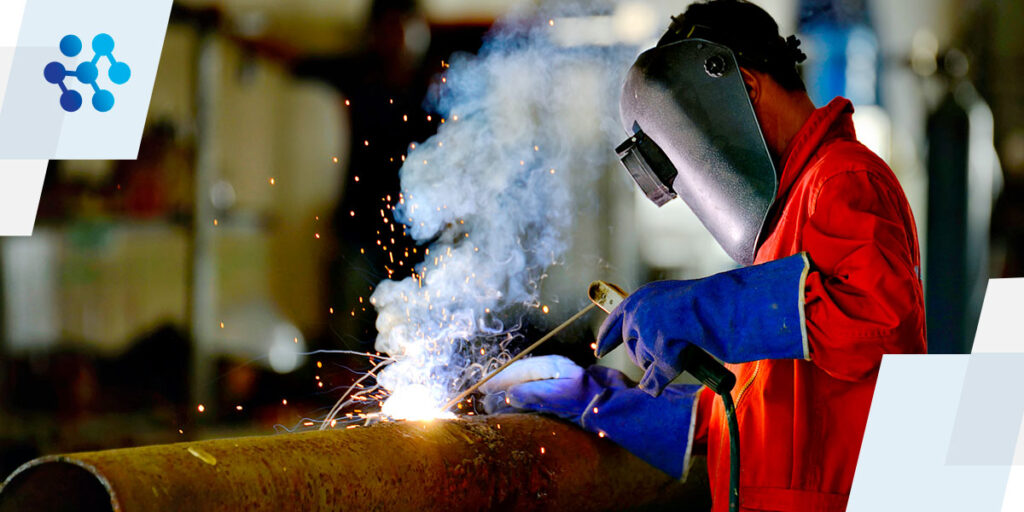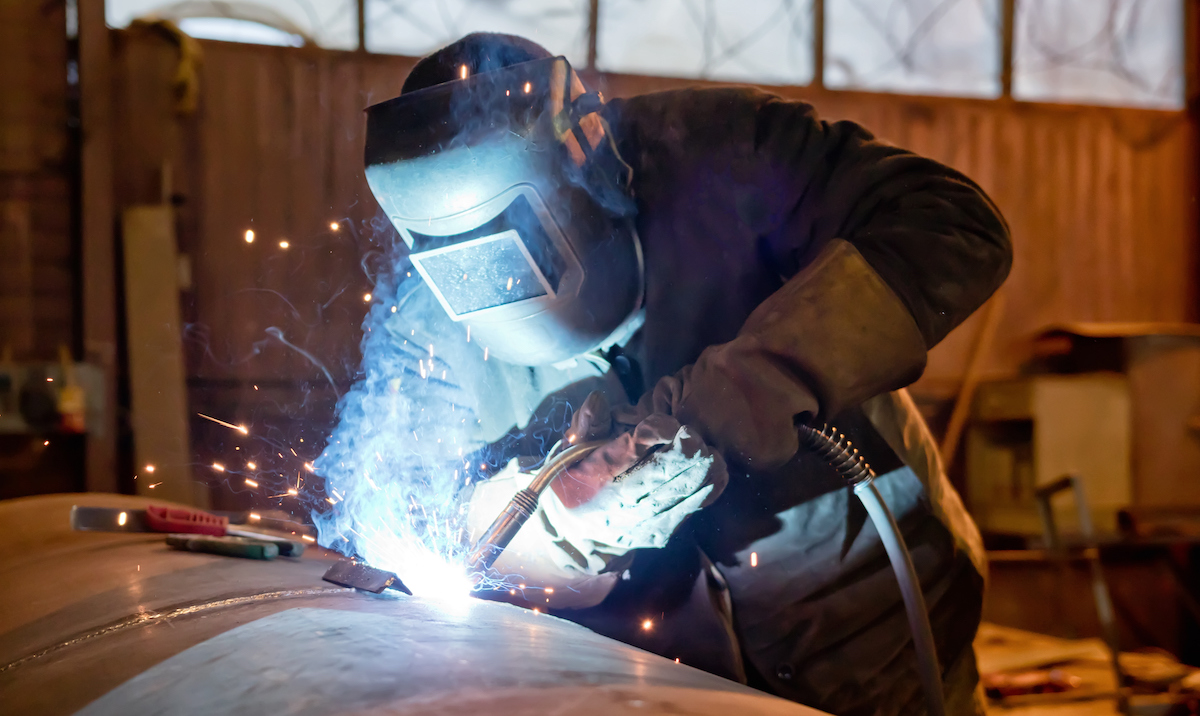Root reasons behind weld porosity and how Belgrade Welding addresses them
Wiki Article
Typical Welding Repair Work Issues and Just How to Address Them Efficiently
Welding repair services often run into a variety of concerns that can threaten the stability of the last product. Typical troubles consist of poor infiltration, porosity, and misalignment, to name a few. Each problem offers distinct obstacles that need particular techniques for resolution. Comprehending these problems is crucial for welders aiming to enhance their abilities and end results. This discussion will check out these usual welding repair service issues and efficient techniques to resolve them.Poor Penetration
Insufficient penetration happens when the weld steel fails to fully fuse with the base material, resulting in weak joints and potential architectural failings. This problem often stems from not enough warm input, incorrect electrode angle, or improper welding speed. Welders may run into inadequate infiltration as a result of a mistake of the required specifications for a certain material density or kind. Additionally, contamination on the base product's surface area can hinder reliable bonding, aggravating the trouble. To deal with insufficient infiltration, welders need to ensure suitable setups on their tools and preserve a tidy job surface area. Regular inspection of welds is advised to determine any kind of shortages early, allowing for prompt modifications and the prevention of jeopardized structural integrity in bonded settings up.Porosity
Porosity is an usual problem in bonded joints that manifests as tiny gas bubbles trapped within the weld metal. This flaw can compromise the stability of the weld, leading to decreased toughness and potential failure under anxiety. Montana Mobile Welding and Repair Belgrade. Porosity generally occurs from contamination, moisture, or incorrect welding techniques, which enable gases to escape into the molten weld pool. To resolve porosity, welders need to assure appropriate surface area prep work, keep a clean working setting, and utilize suitable welding criteria. Additionally, selecting the ideal filler product and protecting gas can mitigate gas entrapment. Routine examination and testing of welds can assist identify porosity early, assuring prompt rehabilitative activities are taken, thus protecting the quality and dependability of the bonded structureMisalignment
Imbalance in welding can occur from numerous variables, consisting of inappropriate configuration and thermal development. Understanding the origin causes is essential for efficient resolution. Numerous modification methods are available to straighten components and assure structural stability.Reasons for Misalignment
Welding misalignment typically stems from a range of underlying problems that can endanger architectural stability. One primary cause is incorrect fit-up of parts prior to welding, which can cause spaces and irregular surface areas. Variations in thermal growth throughout the welding process can additionally cause distortion, particularly if the products being signed up with have different coefficients of growth. In addition, insufficient clamping and fixturing may fall short to hold components safely in area, resulting in activity during welding. Poorly kept devices, including welding makers and devices, might introduce disparities in the weld bead, additional adding to imbalance. Operator error, stemming from not enough training or experience, can additionally play a considerable function in creating misaligned welds.
Correction Techniques Offered
Dealing with imbalance efficiently calls for a combination of corrective strategies tailored to the details issues available. One usual technique is the usage of jigs or components to hold elements in the appropriate setting during welding, ensuring constant alignment. Additionally, pre-heating the materials can help in reducing distortion and improve fit-up. For considerable imbalance, mechanical realignment methods, such as using hydraulic jacks or clamps, can be used to correct the placement prior to welding. Post-weld warmth treatment might additionally be needed to ease stress and anxieties triggered by misalignment. Ultimately, mindful assessment and adjustment throughout the arrangement phase can stop misalignment problems from becoming considerable problems, advertising a smoother welding procedure and boosting general architectural integrity.Distortion
Distortion is a typical obstacle in welding that can develop from different variables, consisting of uneven heating & cooling. Comprehending the reasons of distortion is important for implementing effective prevention techniques. Resolving this issue not only improves structural honesty but also enhances the total quality of the weld.Sources of Distortion
When subjected to the intense warmth of welding, products usually undergo modifications that can result in distortion. This sensation mainly develops from thermal development and tightening during the welding process. As the weld location warms up, the product increases; upon cooling, it acquires, which can produce inner anxieties. Additionally, uneven heating throughout a workpiece can intensify these tensions, resulting in warping or bending. The sort of product also plays a significant function; metals with varying thermal conductivity and coefficients of expansion may react in different ways, leading to unforeseeable distortions. Additionally, inadequate joint design and poor fixturing can add to imbalance during welding, increasing the chance of distortion. Comprehending these causes is essential for effective welding repair and prevention strategies.Avoidance Techniques
Efficient prevention methods for distortion during welding concentrate on controlling warmth input and making certain appropriate joint layout. Maintaining a consistent heat input helps to reduce thermal expansion and contraction, which can result in distortion. Making use of techniques such as preheating the workpiece can likewise reduce the temperature level gradient, promoting uniform home heating. In addition, selecting proper joint styles, such as T-joints or lap joints, can improve stability and decrease stress and anxiety concentrations. Applying proper fixturing to protect the work surfaces in position further help in keeping alignment throughout the welding process. Finally, staggered welding sequences can distribute warmth more uniformly, protecting against localized distortion. By using these strategies, welders can greatly decrease the probability of distortion and boost the overall high quality of their welds.Splitting
Splitting is an usual problem encountered in welding fixings, typically arising from different variables such as improper air conditioning rates, product selection, or inadequate joint prep work. The incident of splits can significantly endanger the integrity of the weld, bring about prospective failings mig welding wire throughout operation. To address this issue, welders should first analyze the root creates, making sure that products work and suitably chosen for the particular application. Furthermore, controlling the air conditioning rate throughout the welding procedure is important; quick air conditioning can cause stress and anxiety and bring about fracturing. Appropriate joint style and prep work likewise contribute to reducing the risk. Applying these strategies can improve weld top quality and resilience, inevitably decreasing the chance of fracturing in finished weldments.Incomplete Combination
A considerable issue in welding repairs is incomplete combination, which takes place when the weld steel does not sufficiently bond with the base material or previous weld passes - Montana Mobile Welding and Repair. This problem can bring about weaknesses in the joint, potentially endangering the integrity of the bonded structure. Elements adding to insufficient blend include inadequate warmth input, improper welding strategy, and contamination of the surface areas being signed up with. To address this problem effectively, welders need to assure proper pre-weld cleaning and surface area preparation, as well as readjust their welding parameters to attain appropriate penetration and combination. Normal assessment during the welding procedure can also aid recognize insufficient blend early, permitting timely rehabilitative procedures to boost the general quality of the weldOverheating
While welding repair services can boost architectural honesty, overheating presents a considerable challenge that can cause material destruction. Extreme warm throughout welding can alter the mechanical buildings of steels, resulting in reduced toughness, boosted brittleness, and warping. This sensation is specifically important in high-stress applications where structural integrity is paramount. Determining overheating can include visual inspections for discoloration or distortion, along with keeping track of temperature level throughout the welding process. To alleviate the threats related to getting too hot, welders ought to employ appropriate techniques, such as regulating warmth input, adjusting traveling rate, and utilizing ideal filler materials. In addition, executing pre- and their website post-weld warm treatments can aid restore material residential or commercial properties and boost the overall top quality of the repair, guaranteeing long-term efficiency and safety.Often Asked Inquiries
What Are the Typical Signs of a Welding Defect?

Exactly How Can I Evaluate My Welds for Quality?
To test welds for top quality, one can utilize aesthetic assessments, ultrasonic screening, and radiographic methods. Each strategy guarantees architectural stability, recognizes flaws, and validates adherence to specified standards, inevitably improving the dependability of the welded joints.What Safety Preventative Measures Should I Take While Welding?
When welding, one should prioritize safety and security by wearing suitable individual safety equipment, guaranteeing correct air flow, protecting flammable materials away, keeping a clean work space, and understanding environments to stop crashes and injuries.Can I Fix a Weld Without Renovating the Entire Joint?
Fixing a weld without redesigning the entire joint is feasible, relying on the damages (Montana Mobile Welding and Repair Fabrication). Strategies such as grinding, adding filler material, or utilizing a welding procedure can efficiently resolve certain flaws while maintaining the surrounding structureWhat Tools Are Important for Effective Welding Repair Works?
Essential devices for efficient welding repair services consist of a welding machine, wire brush, grinder, safety equipment, clamps, and filler products. Each tool plays an essential duty in ensuring quality and security throughout the fixing procedure. Porosity usually occurs from contamination, dampness, or inappropriate welding strategies, which enable gases to get away right into the molten weld swimming pool. Improperly kept tools, including welding machines and tools, might introduce inconsistencies in the weld bead, further contributing to misalignment. When subjected to the intense warmth of welding, products often undergo modifications that can cswip lead to distortion. Cracking is a common issue come across in welding repair services, frequently resulting from different aspects such as inappropriate air conditioning rates, material choice, or poor joint prep work. A significant problem in welding fixings is insufficient combination, which happens when the weld steel does not sufficiently bond with the base product or previous weld passes.Report this wiki page